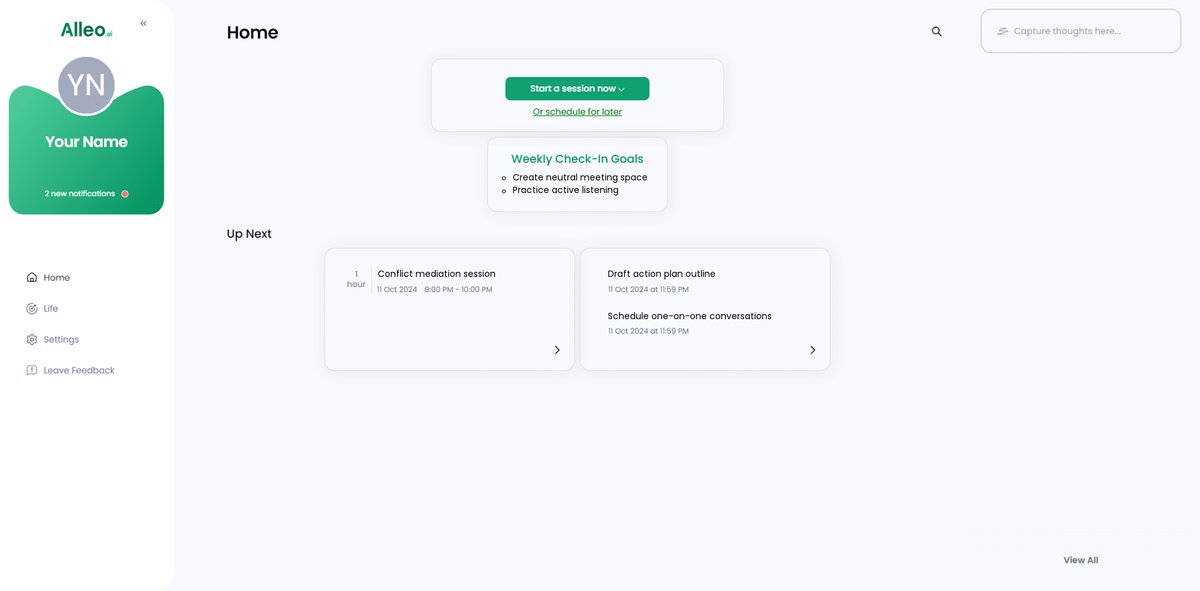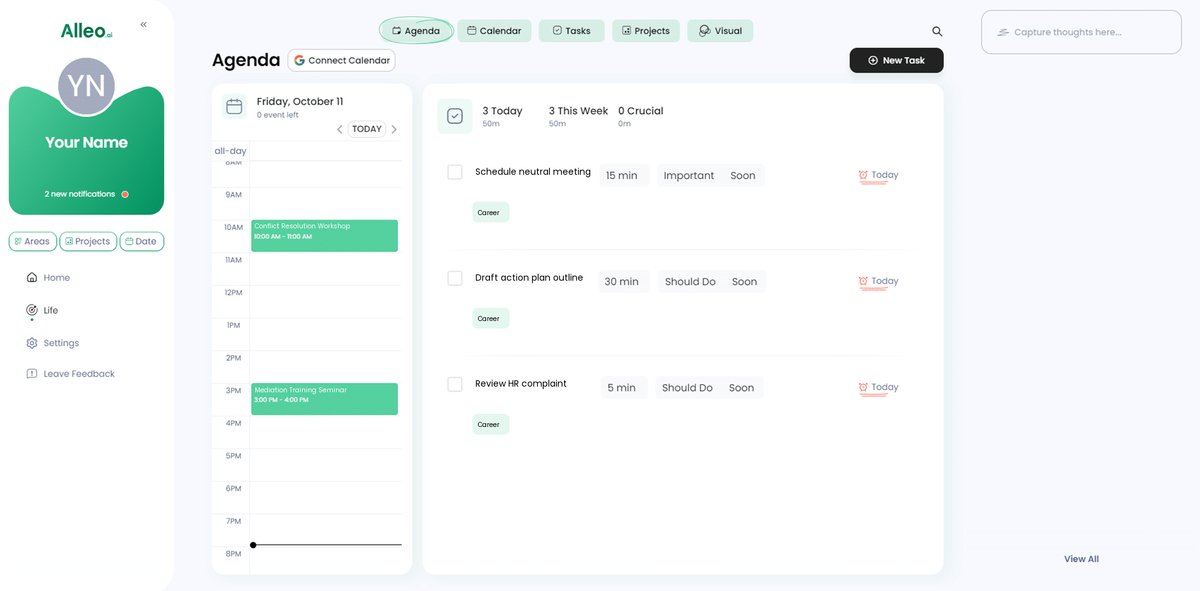How to Mediate Coworker Conflicts After HR Complaints: 4 Essential Steps for Resolution
Imagine walking into your office, only to be met with tension so thick you could cut it with a knife. This is the reality for many workplaces dealing with unresolved coworker conflicts after complaints.
As a life coach, I’ve helped many professionals navigate these challenges. In my experience, effective conflict resolution is key to maintaining positive working relationships and improving team dynamics.
In this post, you’ll discover proven strategies for mediating coworker conflicts after complaints. You’ll learn how to:
- Establish a neutral mediation environment
- Actively listen and validate concerns using effective interpersonal communication in the office
- Guide parties to identify common ground for workplace harmony restoration
- Develop a mutually agreed action plan for professional relationship rebuilding
Let’s dive into these workplace conflict resolution techniques and conflict management strategies.

Understanding the Depth of Coworker Conflicts
When conflicts arise, misunderstandings, competition, or workload distribution often trigger them. These issues can quickly escalate, leading to formal HR complaints and necessitating techniques for mediating coworker conflicts after complaints.
Unresolved conflicts damage team morale and productivity. I’ve seen it firsthand: tension spreads, collaboration falters, and overall workplace culture suffers, highlighting the need for effective conflict management strategies.
Consider the case of Jane and John. Their disagreements not only hurt their performance but also disrupted the entire team’s dynamics, emphasizing the importance of employee mediation techniques and interpersonal communication in the office.
Addressing these conflicts effectively is crucial to restoring harmony and efficiency, often requiring workplace conflict resolution and professional relationship rebuilding.
Effective Strategies for Mediating Coworker Conflicts
Overcoming this challenge requires a few key steps. Here are the main areas to focus on to make progress in mediating coworker conflicts after complaints:
- Establish a neutral mediation environment: Create a comfortable, unbiased space for discussions to facilitate workplace conflict resolution.
- Actively listen and validate both parties’ concerns: Use active listening techniques and empathetic statements to improve interpersonal communication in the office.
- Guide parties to identify common ground: Facilitate discussions to uncover shared goals and agreements, employing conflict management strategies.
- Develop a mutually agreed action plan: Outline clear steps and assign accountability to address the conflict, focusing on professional relationship rebuilding and workplace harmony restoration.
Let’s dive into these employee mediation techniques!
1: Establish a neutral mediation environment
Creating a neutral mediation environment is crucial for fostering open and honest communication between conflicting parties when mediating coworker conflicts after complaints.
Actionable Steps:
- Select a neutral location that is free from interruptions and comfortable for all participants involved in workplace conflict resolution.
- Involve an unbiased mediator who has no prior connections with the involved parties for effective employee mediation techniques.
- Schedule sessions at convenient times, avoiding high-stress periods, to facilitate HR complaint handling.
Key elements of a neutral mediation environment:
- Comfortable seating arrangement to encourage interpersonal communication in the office
- Privacy and confidentiality for conflict management strategies
- Equal physical positioning for all parties to promote professional relationship rebuilding
Explanation: Ensuring a neutral setting helps all parties feel safe and respected, which is essential for effective conflict resolution. This approach minimizes perceived biases and facilitates constructive dialogue, supporting workplace harmony restoration.
According to the CIPD guide on workplace conflict, creating a supportive environment is a key step in resolving disputes. By following these steps, you can create a conducive atmosphere for mediating coworker conflicts after complaints.
This foundation will set the stage for meaningful conversations and pave the way for resolving conflicts amicably, improving team dynamics and supporting post-complaint workplace reconciliation.

2: Actively listen and validate both parties’ concerns
Actively listening and validating concerns is critical to resolving conflicts and ensuring both parties feel heard and respected when mediating coworker conflicts after complaints.
Actionable Steps:
- Provide uninterrupted speaking time: Allow each party to speak without interruptions to express their concerns fully, a key aspect of workplace conflict resolution.
- Paraphrase and reflect back: Summarize what each party says to ensure you understand their viewpoints accurately, an essential employee mediation technique.
- Acknowledge emotions: Validate the feelings of each party by using empathetic statements such as, “I understand this has been challenging for you,” which aids in conflict de-escalation methods.
Explanation: These steps are essential because they help create an environment where both parties feel understood and respected, promoting openness and trust, which is crucial for interpersonal communication in the office.
According to a Forbes Human Resources Council guide, empathy and validation are key components of effective conflict resolution and HR complaint handling.
Implementing these practices can significantly improve the mediation process and lead to more successful outcomes in professional relationship rebuilding.
By actively listening and validating concerns, you set a strong foundation for positive conflict resolution and team dynamics improvement when mediating coworker conflicts after complaints.

3: Guide parties to identify common ground
Identifying common ground is crucial for building cooperation and finding mutually beneficial solutions when mediating coworker conflicts after complaints.
Actionable Steps:
- Facilitate discussion: Encourage both parties to discuss their goals and objectives, highlighting shared interests in workplace conflict resolution.
- Identify agreements: Help parties pinpoint areas where their views align, using these as a foundation for collaboration and improving team dynamics.
- Brainstorm solutions: Conduct a brainstorming session to generate potential resolutions, ensuring all ideas are openly considered for effective employee mediation.
Benefits of finding common ground:
- Builds trust and cooperation
- Shifts focus from differences to shared goals
- Creates a foundation for sustainable solutions in workplace harmony restoration
Explanation: These steps are vital because they foster collaboration and mutual understanding, key to resolving conflicts and improving interpersonal communication in the office.
According to the Program on Negotiation at Harvard Law School, focusing on common interests can lead to more effective conflict resolution.
By guiding parties to identify common ground, you lay the groundwork for sustainable solutions in HR complaint handling.
Building on shared goals creates a positive dynamic and paves the way for lasting resolution and professional relationship rebuilding.

4: Develop a mutually agreed action plan
Creating a mutually agreed action plan is crucial for mediating coworker conflicts after complaints and ensuring that both parties commit to resolving the conflict and restoring workplace harmony.
Actionable Steps:
- Outline specific steps: Clearly define the actions each party will take to address the conflict. Include timelines and measurable outcomes to track progress in workplace conflict resolution.
- Assign accountability: Designate who is responsible for each action item. Establish regular check-ins to review progress and make necessary adjustments, enhancing team dynamics improvement.
- Provide ongoing support: Offer resources like conflict resolution workshops or coaching sessions. Ensure both parties have access to support if further issues arise, promoting professional relationship rebuilding.
Key components of an effective action plan for mediating coworker conflicts after complaints:
- Clear, measurable objectives for conflict management strategies
- Specific timelines and deadlines for conflict de-escalation methods
- Defined roles and responsibilities in employee mediation techniques
Explanation: These steps are essential because they provide a structured approach to resolving conflicts, ensuring accountability and continuous support in HR complaint handling.
According to the UAMS Employee Relations, having a detailed action plan helps maintain focus and measure progress, which is key to effective conflict resolution and interpersonal communication in the office.
By following these steps, you can foster a cooperative environment and resolve conflicts constructively, facilitating post-complaint workplace reconciliation.
By developing a mutually agreed action plan, you lay the groundwork for sustainable conflict resolution and improved workplace dynamics when mediating coworker conflicts after complaints.

Partner with Alleo to Mediate Coworker Conflicts
We’ve explored the challenges of mediating coworker conflicts after HR complaints and the steps to resolve them. But did you know you can work directly with Alleo to make this process of mediating coworker conflicts after complaints easier and faster?
Set up your Alleo account to create a personalized mediation plan for workplace conflict resolution. Alleo’s AI coach provides tailored coaching support for employee mediation techniques, just like a human coach.
You’ll receive full coaching sessions on conflict management strategies and a free 14-day trial, requiring no credit card.
Alleo’s coach will follow up on your progress in interpersonal communication in the office via text and push notifications. They’ll handle changes and keep you accountable in your professional relationship rebuilding efforts.
Ready to get started for free with workplace harmony restoration?
Let me show you how to improve team dynamics and achieve post-complaint workplace reconciliation!
Step 1: Log In or Create Your Account
To start mediating coworker conflicts with AI support, log in to your existing Alleo account or create a new one to access personalized conflict resolution coaching.

Step 2: Choose “Building better habits and routines”
Click on “Building better habits and routines” to develop consistent practices that will help you navigate workplace conflicts more effectively and maintain a harmonious work environment.

Step 3: Select “Career” as Your Focus Area
Choose “Career” as your primary focus area to address workplace conflicts and improve your professional relationships, aligning perfectly with the goal of resolving coworker disputes and creating a more harmonious work environment.

Step 4: Starting a coaching session
Begin your journey with Alleo by scheduling an intake session, where you’ll discuss your workplace conflict situation and collaborate with the AI coach to create a personalized mediation plan tailored to your specific needs.

Step 5: Viewing and Managing Goals After the Session
After your coaching session on mediating coworker conflicts, check the Alleo app’s home page to view and manage the goals you discussed, allowing you to track your progress and stay accountable in resolving workplace tensions.

Step 6: Adding events to your calendar or app
Use the calendar and task features in Alleo to schedule and track your progress on resolving coworker conflicts, allowing you to stay organized and accountable throughout the mediation process.

Bringing It All Together: Resolving Coworker Conflicts
By addressing coworker conflicts effectively through workplace conflict resolution, you can restore harmony and productivity in your workplace.
You’ve learned how to create a neutral mediation environment, actively listen, find common ground, and develop an action plan for mediating coworker conflicts after complaints.
These conflict management strategies can transform tense situations into opportunities for growth and collaboration, improving team dynamics.
Remember, you’re not alone in this journey of professional relationship rebuilding.
Consider leveraging Alleo’s tools to streamline your mediation efforts and enhance your employee mediation techniques.
With Alleo, you’ll have the support and resources you need to tackle conflicts head-on and implement effective HR complaint handling procedures.
Start your free 14-day trial today and experience the difference personalized coaching can make in interpersonal communication in the office.
Together, we can foster a positive and collaborative work environment, focusing on workplace harmony restoration and post-complaint workplace reconciliation.